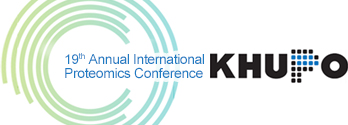Symposia Speakers
Home
> Program > Symposia Speakers > Symposia Speakers
- SYM-1Protein Modification SYM-1 View
- SYM-2Proteins in Pathology SYM-2 View
- SYM-3Biomarkers for Diseases SYM-3 View
- SYM-4Omics Research in Aging SYM-4 View
- SYM-5Clinical Proteomics SYM-5 View
- SYM-6Young Scientists SYM-6 View
- SYM-7Exploring the Unknown Proteins SYM-7 View
- SYM-8Antibody & Biologics SYM-8 View
- SYM-9Multi-omics SYM-9 View
- SYM-10Proteogenomics SYM-10 View
SYM-9 : Multi-omics

- Code / Date
- SYM9-1 / March 29 (Fri)
- Speaker
- Stuart J. Cordwell CV
- Affiliation
- The University of Sydney
- Title
- Multi-omics of the myocardium during ischemia / reperfusion injury
- Abstract
-

- Code / Date
- SYM9-2 / March 29 (Fri)
- Speaker
- Man Ho Choi CV
- Affiliation
- KIST
- Title
- Metabolic signatures of steroids in clinical endocrinology
- Abstract
-

- Code / Date
- SYM9-3 / March 29 (Fri)
- Speaker
- Min-Sik Kim CV
- Affiliation
- Daegu Gyeongbuk Institute of Science and Technology
- Title
- Multi-Omics analysis of pancreatic ductal adenocarcinomas
- Abstract
-

- Code / Date
- SYM9-4 / March 29 (Fri)
- Speaker
- Sureyya Ozcan CV
- Affiliation
- Middle East Technical University
- Title
- Multiomics-Engaging colors
- Abstract
-

Room 404, Nakseongdae R&D Center, 38 Nakseongdae-ro, Gwanak-gu, Seoul, 08790, Korea
Phone: (+82)2–393–8328 E-mail : admin@khupo.org Homepage : http://www.khupo.org
COPYRIGHT ⓒ 2019 KHUPO. ALL RIGHTS RESERVED.
